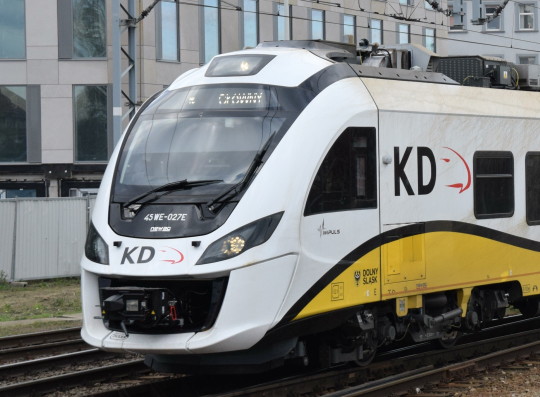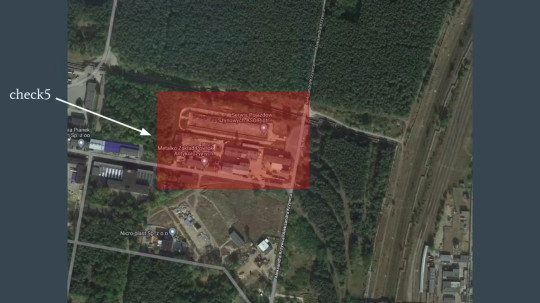#engineering training
Explore tagged Tumblr posts
Text
Tata Steel Invites Applications for Aspiring Engineer Program
Special Recruitment Drive for Women; Selected Candidates to Receive Engineering Training. Tata Steel has announced the invitation of applications for its Aspiring Engineer Program, with a special focus on women candidates. JAMSHEDPUR – Tata Steel is inviting applications for its Aspiring Engineer Program, a unique initiative aimed at providing engineering training to selected candidates. This…
#Age Limit#Assistant Manager#शिक्षा#BE B.Tech eligibility#education#engineering training#Jharkhand#Mediclaim benefits#Odisha#Stipend#Tata Steel Aspiring Engineer Program#Tata Steel Careers#women recruitment
0 notes
Text

God's will is what it is.
7K notes
·
View notes
Text
The Importance Of PLC And SCADA In Instrumentation And Electrical Industries
In the rapidly evolving landscape of instrumentation and electrical industries, staying ahead of the curve is imperative for professionals seeking to enhance their skills and organizations aiming to optimize their processes. Two key technologies that play a pivotal role in achieving this optimization are Programmable Logic Controllers (PLC) and Supervisory Control and Data Acquisition (SCADA) systems. In this blog, we'll delve into the significance of PLC and SCADA in the context of instrumentation and electrical industries, highlighting the importance of specialized training programs such as the PLC course in Perth and instrumentation courses in Adelaide.

1. Automation and Efficiency: PLCs serve as the brain of industrial automation systems, controlling and managing various processes in real-time. These programmable controllers automate repetitive tasks, reducing the margin for error and enhancing overall efficiency. By enrolling in a PLC course in Perth, professionals gain hands-on experience in programming and configuring PLCs, allowing them to implement automation solutions in their workplaces effectively.
2. Precision in Instrumentation: Instrumentation, a critical aspect of industries dealing with processes and systems, relies heavily on accurate data acquisition and control. The integration of PLCs ensures precise monitoring and control of instruments, contributing to the reliability and accuracy of measurements. Courses in instrumentation, such as those available in Adelaide, equip individuals with the knowledge to seamlessly integrate PLCs into instrumentation systems, fostering a more robust and controlled industrial environment.
3. Real-time Monitoring with SCADA: SCADA systems provide a comprehensive overview of industrial processes by collecting and analyzing data from various sensors and instruments. This real-time monitoring capability enables swift decision-making and timely response to potential issues. Instrumentation training, combined with SCADA knowledge, empowers professionals to design and implement sophisticated control systems that enhance the overall performance and safety of industrial processes.
4. Fault Detection and Maintenance: One of the key advantages of PLC and SCADA systems is their ability to detect faults and abnormalities in real-time. This proactive approach allows for timely maintenance and minimizes downtime, resulting in cost savings and improved productivity. Professionals undertaking specialized courses, such as instrumentation training, are better equipped to identify and address issues within complex industrial systems.
5. Adaptability to Industry 4.0: As industries transition towards Industry 4.0, the integration of smart technologies becomes paramount. PLCs and SCADA systems play a crucial role in this transformation by facilitating seamless communication between devices and systems. Professionals trained in PLC and instrumentation courses are better prepared to navigate the challenges of Industry 4.0 and contribute to the implementation of smart, connected industrial processes.
In conclusion, the importance of PLC and SCADA in the instrumentation and electrical industries cannot be overstated. Enrolling in specialized courses, such as the PLC course in Perth or instrumentation courses in Adelaide, provides professionals with the skills and knowledge needed to harness the full potential of these technologies. As industries continue to evolve, staying abreast of technological advancements through targeted training becomes a strategic imperative for both individuals and organizations aiming to thrive in the competitive landscape of instrumentation and electrical industries.
Contact:
Phone: 1800 768 768
Mail: [email protected]
Website: https://hazardousareacoursesinadelaide.com.au/
0 notes
Text

not cringetober bc i was busy today
but i did get a doodle done for 40 years of thomas the tank engine <3
#my art#Tangerine Bullet Train#Lemon Bullet Train#Bullet Train#Thomas and Friends#Thomas the Tank Engine#artists on tumblr#art#doodle#🍊#🍋#>:3c hope you guys like my headcanon for T's joburg fit#i just like drawing them in different outfits n trying to match them while keeping their respective styles#they are so fun to draw fr
1K notes
·
View notes
Text

Have you heard about the Polish Train company, Newag, and the bullshit it turns out they got up to?
So, the regional rail operator Koleje Dolnośląskie bought some Newag Impuls back in 2016 . In late 2021, some of them need to have major maintenance done, as they've been in service a while. So the company SPS (Serwis Pojazdów Szynowych) gets the contract to fix them. They basically take the train apart, replace a bunch of it, following all the rules in the documentation Newag gave them, and... it won't move. The train says everything is fine, the brakes are off, there's plenty of power, but you push the throttle up and it won't move.
SPS spends a while trying to figure out what the fuck is wrong, with no luck. So they hire some hackers from the Polish security group Dragon Sector. Dragon Sector figures out how to get into the code of the computer system that runs the train, and OH MY GOD.
So it turns out there's a secret train-lock system. If it's on, the train won't move. This will be triggered in some situations you might think are normal: the clocks are wrong, the serial numbers of the various parts have changed, and a firmware mismatch between the main computer and the power system. Now, the fact that it makes sense to not run the train in these situations until someone can check it? that doesn't extend to the fact the train uses a SECRET lock system, rather than just popping up an error message telling you what's wrong. There's also the problem that while these are all potential error problems, they can't be cleared by anyone with the technical manuals, which are supposed to cover everything about how to run these trains. Only Newag themselves can reset this system.
Which, you know, keeps SPS from properly fixing them. Only Newag can fix them now, but not because SPS lacks any technical ability, but because Newag sabotaged their own trains. But don't worry: it gets worse.
So now that Dragon Sector knows what's happening, they get to look at other trains. It turns out the trains aren't all running the same software, and there are other tricks in there.
One of them is a "how long has the train been stopped?" check. If the train hasn't hit 60 km/h in 10 days, the train locks itself and won't move until Newag can clear it. So, like, if a train is ever out of service, like it's going to a repair place... it'll break itself. Unless the repair place is owned by Newag.
But two of the trains go further: See, these trains have GPS built in, right? You may be able to guess where this is going...

THEY JUST MAKE THE TRAIN CHECK IF IT IS PARKED AT THEIR COMPETITORS' REPAIR YARD AND BREAK ITSELF IF IT WAS.
The sheer audacity of this move. This is frighteningly bullshit anti-competition self-sabotage.
This has, obviously, made some parts of the Polish government to start investigating this. Newag may be (and hopefully will be) in a lot of trouble.
For more info, there's a great video of a presentation by the three people from Dragon Sector who did the hacking, which was presented at the 37th Chaos Communication Congress in Germany.
Ars Technica also has an article on it, but it predates the presentation so it doesn't have some of the later details.
Anyway, the good news is that in the end the hackers at Dragon Sector were able to unlock most of the trains: A few had additional trickery that they didn't want to hack around, because it might break the train's certification. For the others, they discovered undocumented "cheat codes" in the software that they could use to bypass the secret lockouts... presumably the same ones that Newag would have used when they "repaired" trains.
5K notes
·
View notes
Text

💋💋💋
lemme know if you bingo'd on this lolol i must know for science
#DO NOT USE TO TRAIN AI#digital art#art#fanart#artist on tumblr#digital illustration#tf2#tf2 fanart#team fortress two#team fortress 2#team fortress 2 fanart#tf2 scout#tf2 soldier#tf2 pyro#tf2 demoman#tf2 demo#tf2 heavy#tf2 engineer#tf2 engie#tf2 medic#tf2 sniper#tf2 spy
584 notes
·
View notes
Text
septaphilly
After 40 years #SEPTA’s first female train engineer - Jackie Pettyjohn aka First Lady of SEPTA - celebrated her last day yesterday.
She never saw herself as a pioneer - being the first of anything.
Jackie came into the job in August 1984 after she saw and responded to an ad in the Philadelphia Inquirer. Within a matter of weeks - the job was hers and her unexpected career as a game-changer had begun.
She has said she had no intention of staying but she ended up falling in love with the job and despite the demanding hours found a way to balance work and family.
The crowd who came out to celebrate Jackie’s last ride is evidence of the impact and inspiration she leaves behind.
Congrats Jackie!
#train engineer#black women#black history#black excellence#black people#black empowerment#black pride#blacklivesmatter#black lives matter#black empowering#good news
620 notes
·
View notes
Text
So... I appear to have blacked out last night, and woke up with this open on my computer

Is... Is this something anyone would actually play?
@ayviedoesthings is the creator of the temporary background I'm using, though if this does end up getting fully developed, the cave would be a visit-able location
Edit: wait it’s @nyxisart who did the background! My bad!
#animal hrt#game development#indie games#unity#unity engine#unity game development#transblr#transgender#trans woman#trans artist#queer artist#dating sim#visual novel#I will do ANYTHING to avoid voice training
451 notes
·
View notes
Text

Someone take my pen away from me
#my art#pokemon#submas#ingo and emmet#thomas the tank engine#choo choo motherfu--#look idek i did this at my work desk today#boss makes a dollar i make a dime#thats why i draw fucking trains on company time
457 notes
·
View notes
Text
TF2 Disco Elysium crossover let’s go





me after combining two of my current fixations:

#i love video game men#my art#tf2#tf2 spy#tf2 demoman#tf2 medic#tf2 engineer#disco elysium#jean vicquemare#harry du bois#trant heidelstam#kim kitsuragi#got this idea on a train a while ago#have mercy on me
1K notes
·
View notes
Text

The Jacobite, Glenfinnan Viaduct
#the jacobite#jacobite#steam train#steam engine#steam locomotive#locomotive#train#railways#original photographers#photographers on tumblr#landscape#nature#britain#trees#adventure#scotland#glenfinnan#glenfinnan viaduct#architecture#scottish highlands#harry potter fandom#harry potter#hp fandom
523 notes
·
View notes
Text
A silly and cute redraw!!

Unedited ver.

#ttte#annie and clarabel#ttte annie#ttte clarabel#thomas the tank engine#thomas the train#thomas and friends#ttte thomas#ttte humanized#ttte gijinka#offbeat03
760 notes
·
View notes
Text
Understanding Hazardous Areas: Classification and Safety Measures
Hazardous areas, as per OSHA standards, are locations where the presence of explosive atmospheres necessitates special precautions to ensure the safety of workers. These areas are generally characterized by the potential for fire or explosion due to the presence of flammable gases, liquids, combustible dust, or ignitable fibers.

Classification of Hazardous Areas:
Identification of Flammable Materials: The first step involves identifying potentially combustible materials such as gases, liquids, and dust. Information on flashpoints, auto-ignition temperatures, and gas sub-groups can be obtained from Material Safety Data Sheets (MSDS) or AS/NZS/IEC 60079.20.1.
Gas groups and temperature classes for hazardous zones are then determined based on this information.
Sources of Release Determination: Understanding the sources of release is crucial. Depending on normal operation or unusual events like equipment failure, sources are categorized into three grades with associated hazardous area zones:
a) Continuous release, resulting in Zone 0 or Zone 20 for gas/vapor or Zone 30 for dust atmospheres.
b) Periodic release during normal operation, leading to Zone 1 or Zone 21 for gases, vapors, or dust.
c) Release in an abnormal or failing state, typically resulting in Zone 2 or Zone 22 for gases, vapors, or dust.
Intensity and Shape Considerations: Several factors influence the size and shape of a hazardous area zone:
a) Release rate influenced by the geometry, velocity, and concentration of the release source.
b) Ventilation impacting the persistence and concentration of the release.
c) Material's lower explosive limit (LEL).
d) Density of the material, particularly if it's heavier or lighter than air, affecting the zone's shape.
Courses for Upskilling in Hazardous Areas:
UEE42620 Certificate IV in Hazardous Areas Electrical: This course provides comprehensive training in selecting, installing, testing, maintaining, and inspecting Ex equipment, ensuring compliance with AS/NZS 60079.14 and AS/NZS 60079.17.
EEHA Refresher Course: A two-day program, including an optional practical assessment, designed for electrical technicians and engineers with prior training in hazardous electrical equipment installation, maintenance, and design. The course covers the revision of Ex Protection Techniques and introduces new technology.
For further details, feel free to connect with us.
Contact Us:
Website: www.hazardousareacoursesinperth.com.au
0 notes
Text

EMPIRE STATE EXPRESS / NEW YORK CENTRAL SYSTEM, 1941. Leslie Ragan. Lithographic poster.
#poster#posters#train#railway#graphic design#design graphique#design grafico#1940s#vintage#new york#futurism#art deco#engineering
1K notes
·
View notes
Text




Woahh animals👍👍
#starlight express#stex#greaseball the diesel#dinah the dining car#cb the red caboose#electra the electric engine#etchif art#fanart#art#character design#anthro#anthro planes are called a*romorphs (censored so this doesn't appear in the tag). are anthro trains locomorphs?#gonna call them that#locomorph
568 notes
·
View notes